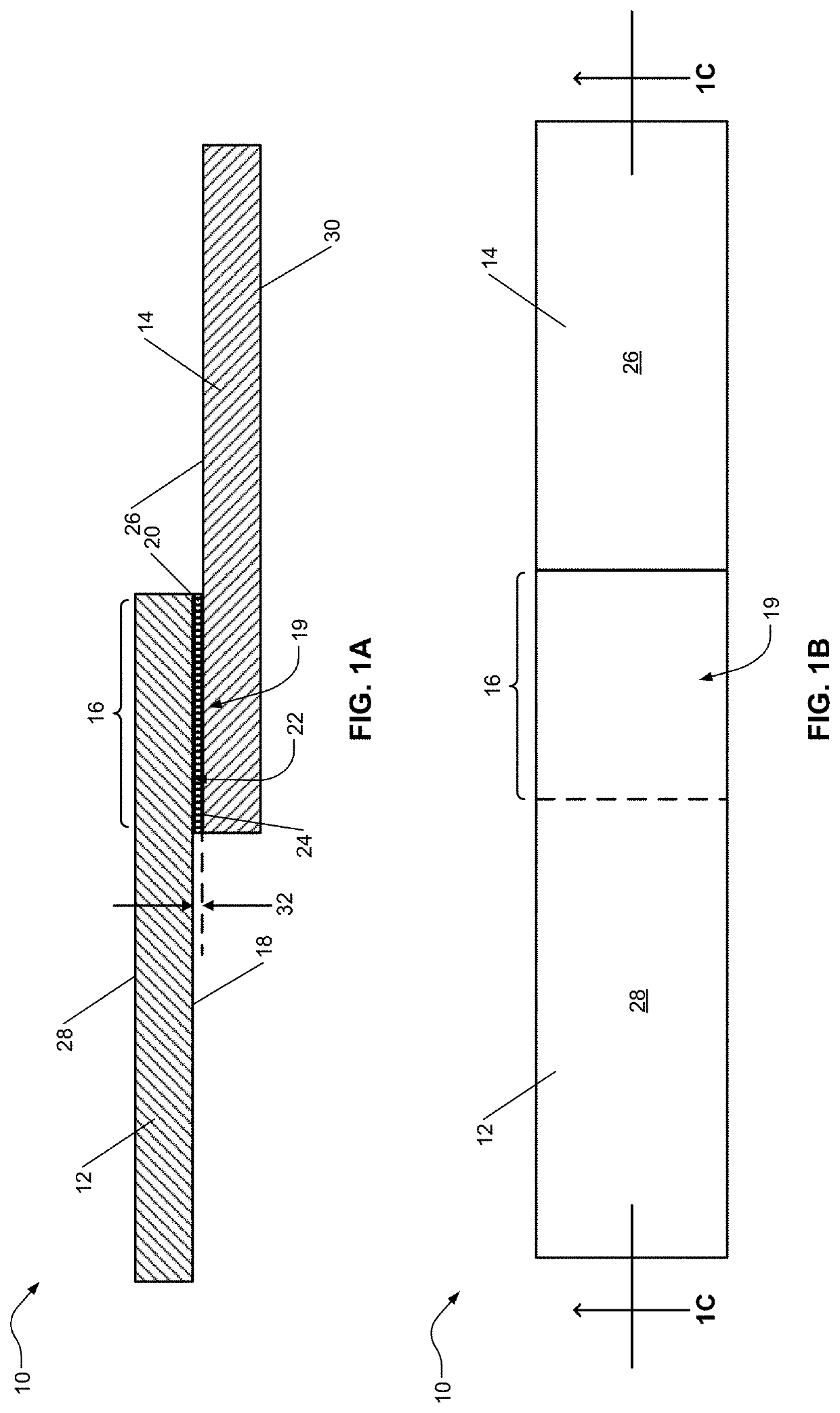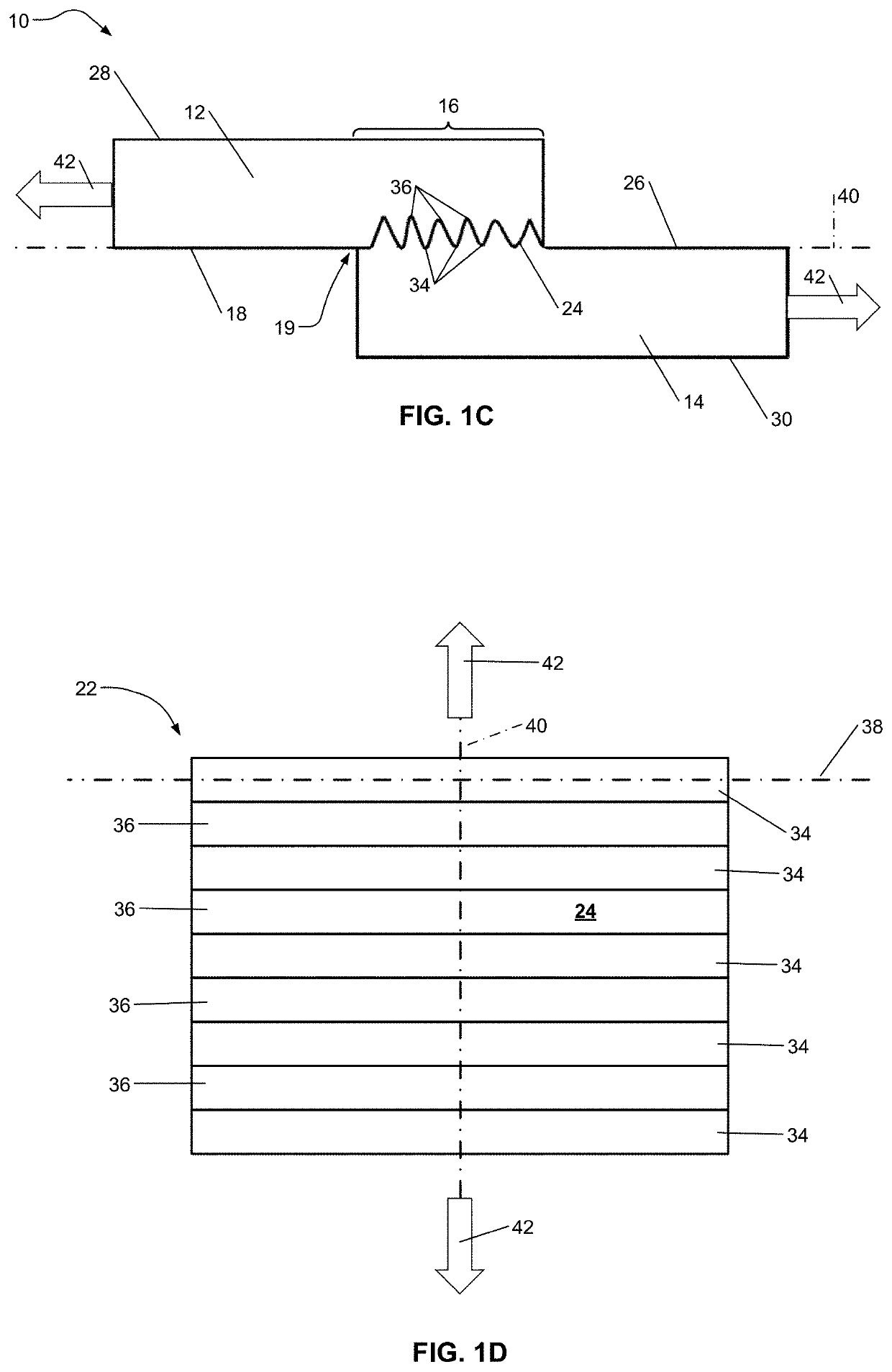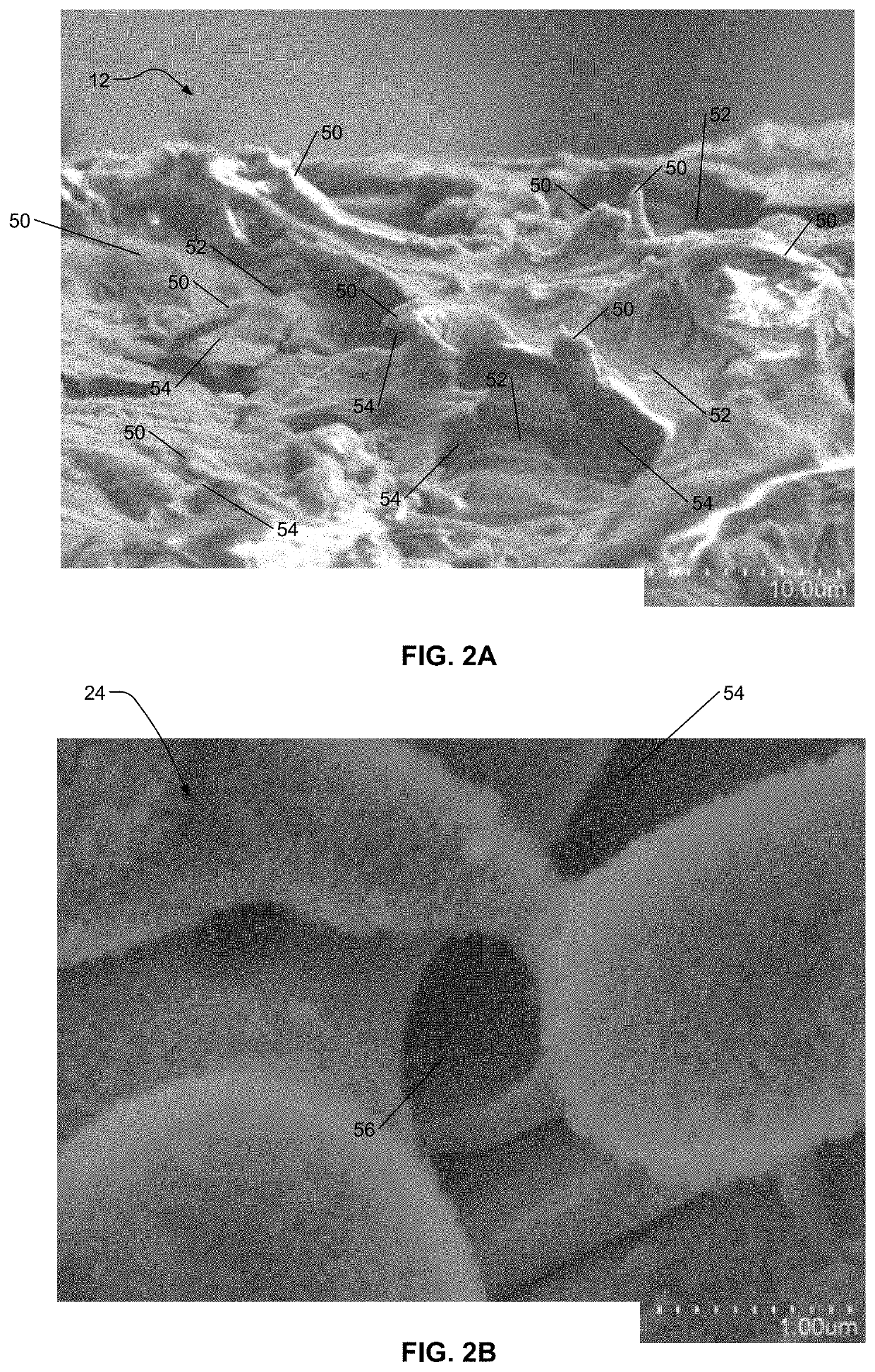Laser-induced Anti-corrosion micro-anchor structural layer for metal-polymeric composite joint and methods of manufacturing thereof
- Summary
- Abstract
- Description
- Claims
- Application Information
AI Technical Summary
Benefits of technology
Problems solved by technology
Method used
Image
Examples
example 1
7-Day Corrosion Testing
[0112]With reference to FIGS. 17-19B, a first, second, third, and fourth metal-polymeric composite assemblies (also referred to as first, second, third, and fourth samples) are prepared according to certain aspects of the present disclosure. The first and third samples each include a first component having a first surface with a layer disposed thereon. A body of the first component includes a first metallic composition and the layer includes a second metallic composition. The first metallic composition includes hot dip galvanized (HDG) low-carbon steel and the second metallic composition includes SS316 stainless steel. The second and fourth samples each include a first component having the first metallic composition and a sacrificial coating including zinc (e.g., HDG steel). The second and fourth samples do not have layers of the second metallic material. Each of the first, second, third, and fourth components includes a second component including a polymer an...
example 2
Cyclic Corrosion Testing
[0116]First and second sets of samples are prepared. Each of the samples of the first set includes a metal component including steel and a stainless steel 316 layer, and a composite component including Nylon 6 and carbon fibers. Each of the samples of the second set includes a metal component including steel having a sacrificial zinc coating (e.g., HDG steel), and a composite component including Nylon 6 and carbon fibers.
[0117]The samples undergo cycles of a salt spray and dry off. Each test cycle includes three stages: (1) an ambient stage at a first temperature of about 25° C.±3° C. and a first relative humidity of about 45%±10%; (2) a humid stage at a second temperature of about 49° C.±2° C. and a second relative humidity of about 10%; and (3) a dry-off stage at a third temperature of about 60° C.±2° C. and a third relative humidity of less than about 30%. Each stage is performed for a duration of about 8 hours, for a total cycle duration of about 24 hours...
example 3
Layer Analysis
[0119]With reference to FIGS. 21A-21C, the composition of a joint is analyzed. The joint 370 includes a metal component 372 including steel and a layer 374, and a composite component 376. Energy-dispersive X-ray spectroscopy (EDX), is used to determine a thickness of a layer 374. Referring to FIG. 21C, a first color 378 corresponds to carbon, a second color 380 corresponds to chromium, a third color 382 corresponds to iron, and a fourth color 384 corresponds to nickel. The percentages correspond to weight percent of each element. Element mapping, a composite of which is shown at FIG. 21B, is used to identify the layer 374. An average thickness 386 of the layer 374 is about 600 μm.
PUM
| Property | Measurement | Unit |
|---|---|---|
| Thickness | aaaaa | aaaaa |
| Thickness | aaaaa | aaaaa |
| Power | aaaaa | aaaaa |
Abstract
Description
Claims
Application Information
 Login to View More
Login to View More - R&D
- Intellectual Property
- Life Sciences
- Materials
- Tech Scout
- Unparalleled Data Quality
- Higher Quality Content
- 60% Fewer Hallucinations
Browse by: Latest US Patents, China's latest patents, Technical Efficacy Thesaurus, Application Domain, Technology Topic, Popular Technical Reports.
© 2025 PatSnap. All rights reserved.Legal|Privacy policy|Modern Slavery Act Transparency Statement|Sitemap|About US| Contact US: help@patsnap.com



